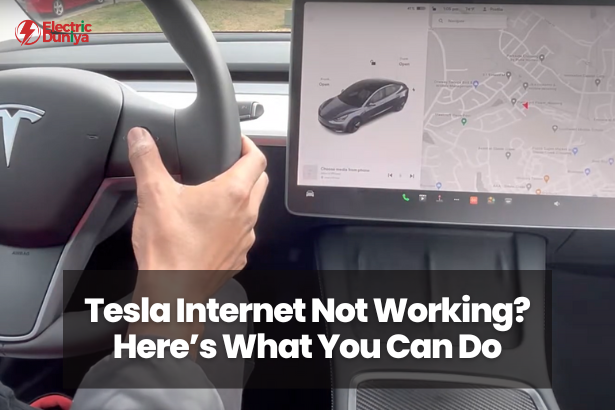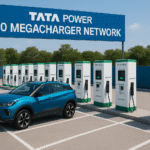I totally understand how upsetting it can be when the internet connection of your Tesla, like a Model 3, Model Y, or even a Model S, suddenly falls through.
One minute you’re using live traffic updates, streaming your favorite playlist via Spotify or TuneIn through Tesla’s Premium Connectivity, and the next—there’s nothing at all.
It’s a feeling that really gets to you, almost as if your car has lost part of its intelligence when the internet isn’t working.
When these types of unexpected technological hitches come up, you need quick solutions.
In this guide, I’ll explain why Tesla internet issues happen and show you practical, easy fixes that should hopefully get your Tesla reconnected and running smoothly.
Why Your Tesla’s Internet Might Not Be Working
When I was trying to connect the internet to my Tesla Model 3, it failed—and I discovered there are several possible causes:
- Weak Wi-Fi Signal: If your Tesla is parked too far from your home WiFi router, or if the signal is blocked by thick walls or metal structures, connectivity can drop. Tesla recommends at least two strong bars of WiFi signal visible on the screen for optimal connection.
- Inadequate Cellular Coverage: Tesla vehicles automatically switch to LTE (or 5G in newer models like the 2023 Model S) when WiFi isn’t available. Poor cellular reception, especially in rural or countryside areas, can prevent connection. I faced this once when I traveled to a remote village—the Tesla LTE signal simply vanished.
- Expired Premium Connectivity Subscription: Features like live traffic visualization, music streaming apps, satellite maps, and the internet browser require an active Premium Connectivity package. If your subscription has expired, these internet-dependent services won’t work until you renew via the Tesla mobile app.
- Software Bugs After Updates: Sometimes, after a Tesla software update, minor bugs can affect internet connectivity. It’s a known quirk, just like with any sophisticated software.
- Hardware Issues (Rare): Though uncommon, faults with the car’s internal modem or Wi-Fi antenna could cause persistent connectivity issues. In such cases, professional service at a Tesla Service Center might be necessary.
Understanding the root cause will help you fix Tesla internet issues faster and get back to a seamless driving experience.
Step-by-Step Fixes You Can Try
Here’s what worked for me:
Restart the Touchscreen
Think of it like rebooting your smartphone:
Hold down both scroll wheels on the steering wheel for about 10 seconds until the screen turns black and the Tesla “T” logo appears.
This soft reset often clears minor glitches, including connectivity problems.
Forget and Reconnect to Wi-Fi
Sometimes your Tesla might be connected to a network without an active internet connection:
Go to Controls > Wi-Fi, tap the connected network, choose Forget, and reconnect by entering your Wi-Fi password again.
Check the Signal Bars
Look at the top-right corner of the Tesla screen where the LTE or WiFi signal icon appears.
If signal bars are low or absent, move to an area with better cellular or WiFi coverage.
Urban areas and suburbs usually have stronger signals compared to rural or mountainous regions.
Verify Your Premium Connectivity Subscription
Open the Tesla App, tap Upgrades, and check your subscription status for Premium Connectivity.
If it’s expired, you can renew it directly within the app and restore your internet features instantly.
Use a Mobile Hotspot
When in a pinch, connect your Tesla to a mobile hotspot from your smartphone.
Go to Controls > Wi-Fi, select your phone’s network, and connect.
This trick saved me several times, especially during trips to areas with weak public WiFi.
Check for Software Updates
Visit Controls > Software on your Tesla screen.
If there’s a pending firmware update, install it while connected to a strong WiFi network.
These updates often include fixes for known bugs affecting WiFi or LTE connectivity.
Final Thoughts
Your Tesla is a remarkably smart machine, but even the smartest technology needs occasional help.
Being connected is crucial for accessing navigation features, streaming services, and Tesla software updates that bring new improvements.
By following the steps I’ve shared, you can fix most internet-related problems yourself without visiting a service center.
If none of the solutions work, don’t hesitate to reach out to Tesla Support through the Tesla app for professional assistance.
Staying connected ensures your Tesla stays smarter, safer, and more entertaining on every journey.







